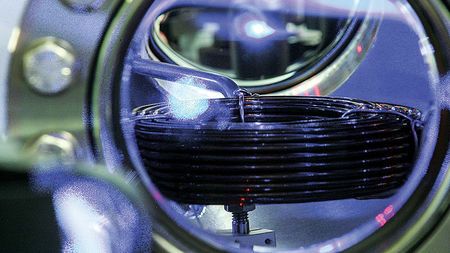Does The New Generation Runs On Atomic Clocks?
Jun 07, 2019 • 0 views
An Atomic clock is a timekeeping instrument which calculates the resonations of a molecule (mostly caesium or ammonia) to determine the time. They are highly accurate and are used as international standards for time measurements. They are installed in satellites and servers to do work accurately.
Why so much fuss?
The first commercial atomic clock was the Atomichron manufactured by the national company. Over 50 of them were sold in the international market.

The core of the radio frequency clocks is made of adjustable microwave cavity filled with gas. The precision of a watch is dependent majorly on the adjustment process. In the adjustment process, unwanted frequencies are removed, such as resonance from neighbouring atoms.
International standard agencies have several atomic clocks installed all around the globe, which is compared regularly to avoid any inconsistency. The feedback and correction process is far more complicated than the adjustment process. Several agencies coordinate with each other for setting up clock.
Chip scale atomic clocks were demonstrated in 2004 for the first time and were available for commercial use in 2011. Quantum clocks appeared in 2008. They were the most accurate clocks to be ever constructed because they didn't lose a second of time even in a billion years. Quantum clocks were based on individual ions of beryllium and aluminium.
Atomic clocks are an essential part of the GPS. The working principle is that the GPS device calculates the time delay from 4 or more satellites and then compare data to find out your exact position.
Regular grade consumer clocks are quartz-based and have an inaccuracy of 0.1 seconds. They are generally named as atomic clocks for market manipulations.
Most of the digital clocks rely on the set-up of the transmitter by the government for timekeeping. Nowadays, clocks in mobiles are adjusted using wireless data exchange.
What can be improved?
Atomic clocks are one of the few technologies which have achieved the absolute maximum. Now, we do not need to have to upgrade the time computing technology for at least a century. Even in devices with no display, a clock is required to keep it connected to the world. In an atomic clock the State-A atoms are sent to a cavity where they are bombarded with microwave radiation, which triggers them to go to State-B. A detector then counts how many of the atoms have changed to State-B.
Scientists are currently developing optical clocks which are even more accurate then atomic clocks.
